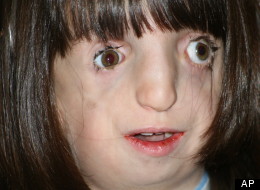There are three men on a train. One of them is an economist, one of them is a logician, and one of them is a mathematician. And they have just crossed the border into Scotland and they see a brown cow standing in a field from the window of the train.
The economist says, “Look, the cows in Scotland are brown.”
And the logician says, “No. there are cows in Scotland of which one at least is brown.”
And the mathematician says, “No. there is at least one cow in Scotland, of which one side appears to be brown.”
-Adapted from The Curious Incident of the Dog in the Nighttime
Today, I took Ryan to Pump It Up. For those not acquainted with the concept, it is a giant warehouse full of inflatable bouncy rooms that allow you to jump up and down like a trampoline (but softer), slide, or navigate an obstacle course. It is great fun, especially to people with sensory disorders.
We’re on a first-name basis with the manager at the local place, and today, we were welcomed in our usual way by the staff. We headed to the arena, which is usually empty or nearly so on Wednesday afternoons, as most children are in school at the hour we arrive (our children get out of school early on Wednesdays, because the school system believes that teachers need an extra break from our children. They probably do). Today, however, there were two preschool-aged girls in the arena. Ryan went into his favorite bouncer (and there are several choices available), and one of the little girls followed him inside. Just as an aside, Ryan does not jump at all in the bouncers. He sits in the corner, against a pillow-like vertical column and rocks, bouncing his back against it.
I usually read or do work, so I was somewhat surprised to hear a voice say, “is he aggressive?”
It took a moment to realize it was someone speaking to me.
“I’m sorry?” I replied, still uncertain.
“I’m just asking if he’s aggressive. You know, yesterday there was a group of ‘different’ kids here,” (and yes, the air quotes were hers), “and one of them was aggressive towards my daughter and I had to complain.”
For one minute, I didn’t know what to say. I was just dumbstruck. Was this really happening? I formulated a knockout punch.
“No, he’s not usually aggressive toward other children. I am really glad you asked that question though, because it would be terrible for you to assume, solely on the basis of how he looks (because you don’t know him at all), that he would be more likely to be aggressive because of his appearance.”
Now it is her turn to look stunned and to be unsure how to react.
I decide to make it easy for her. “I mean, it would be like me assuming that you are more likely to rob me because your skin is dark, right?” Fuming, I promptly got up and instructed Ryan to follow me to the other end of the arena.
Every day, this prejudice plays itself out in my son’s life. He must be mean, aggressive, or “scary,” as children often say, because he looks different. And adults assume he must be intellectually impaired before he ever says a word (there is actually no connection between most congenital craniofacial disorders and intellectual disability, and the vast majority of people with my son’s condition have no intellectual impairment at all). Even with common genetic disorders like Down Syndrome, which used to entail a life of institutionalization, people are receiving better education and healthcare, and are now writing books, modeling, acting and enjoying the right to marry and have families (sound familiar?).
The irony here, of course, that members of racial and ethnic minorities have their own inherent biases, sometimes against their own racial or ethnic group. If you want to hear a discussion on inherent bias, I highly recommend you listen to “Cops See it Differently” on NPR’s This American Life.
Discrimination against disability is one of the last acceptable “isms” in our society.
Recently, I saw “Black Lives Matter” spray-painted on an overpass on an I-95. Someone struck through “Black” and replaced it with “All.” Of course all lives matter. That completely misses the point of the movement. As a society, we don’t react that way though, do we?
